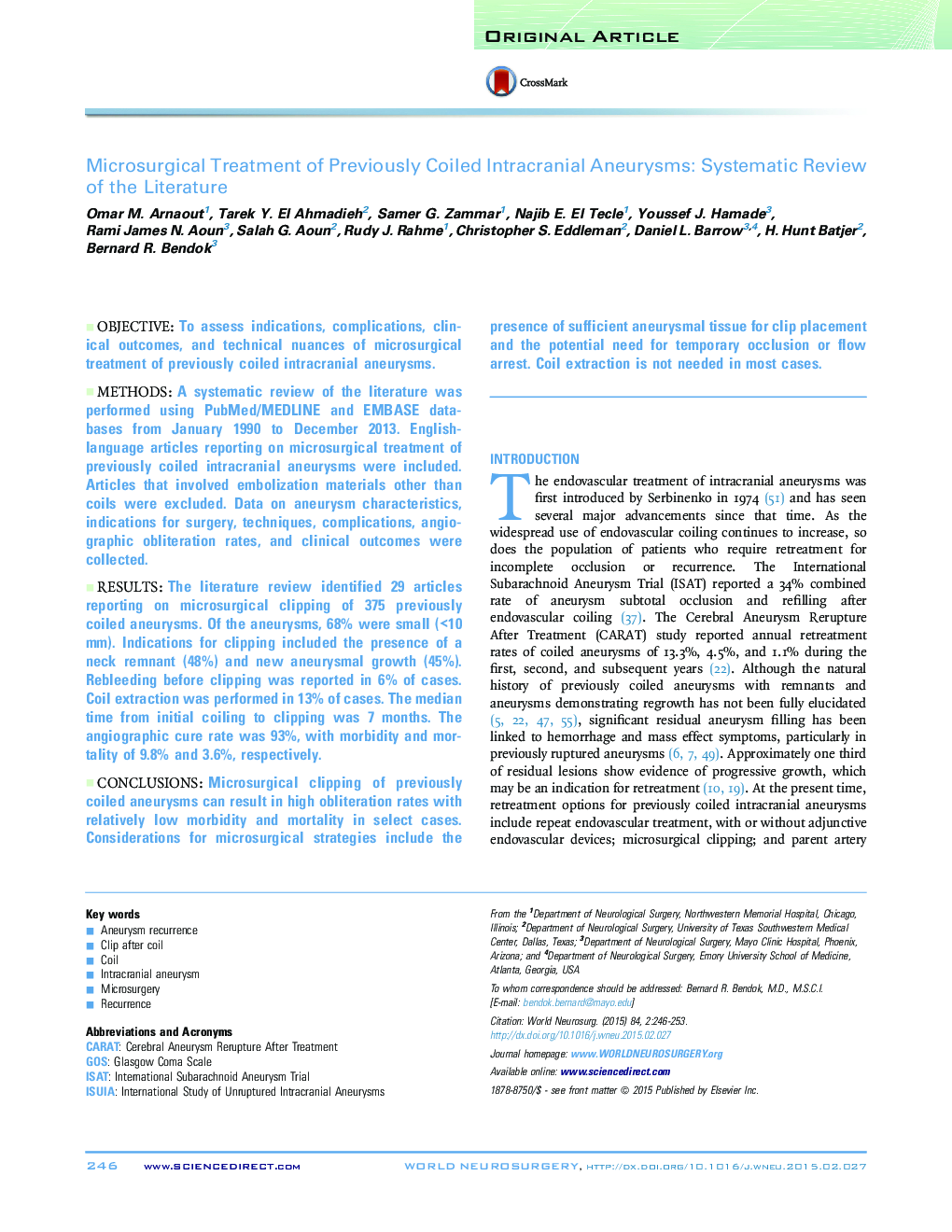| Article ID | Journal | Published Year | Pages | File Type |
|---|---|---|---|---|
| 3094779 | World Neurosurgery | 2015 | 8 Pages |
ObjectiveTo assess indications, complications, clinical outcomes, and technical nuances of microsurgical treatment of previously coiled intracranial aneurysms.MethodsA systematic review of the literature was performed using PubMed/MEDLINE and EMBASE databases from January 1990 to December 2013. English-language articles reporting on microsurgical treatment of previously coiled intracranial aneurysms were included. Articles that involved embolization materials other than coils were excluded. Data on aneurysm characteristics, indications for surgery, techniques, complications, angiographic obliteration rates, and clinical outcomes were collected.ResultsThe literature review identified 29 articles reporting on microsurgical clipping of 375 previously coiled aneurysms. Of the aneurysms, 68% were small (<10 mm). Indications for clipping included the presence of a neck remnant (48%) and new aneurysmal growth (45%). Rebleeding before clipping was reported in 6% of cases. Coil extraction was performed in 13% of cases. The median time from initial coiling to clipping was 7 months. The angiographic cure rate was 93%, with morbidity and mortality of 9.8% and 3.6%, respectively.ConclusionsMicrosurgical clipping of previously coiled aneurysms can result in high obliteration rates with relatively low morbidity and mortality in select cases. Considerations for microsurgical strategies include the presence of sufficient aneurysmal tissue for clip placement and the potential need for temporary occlusion or flow arrest. Coil extraction is not needed in most cases.
